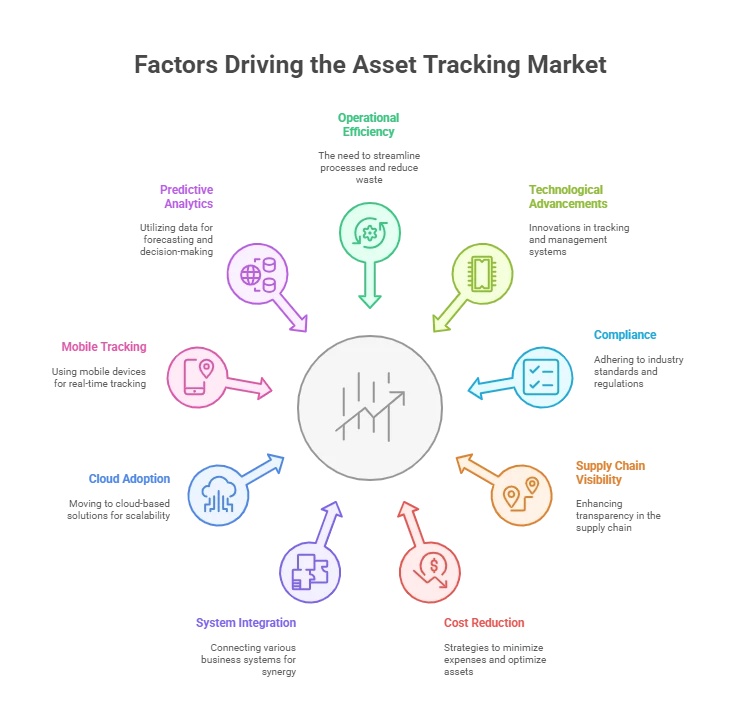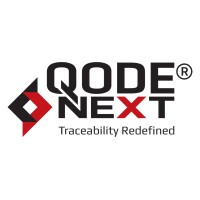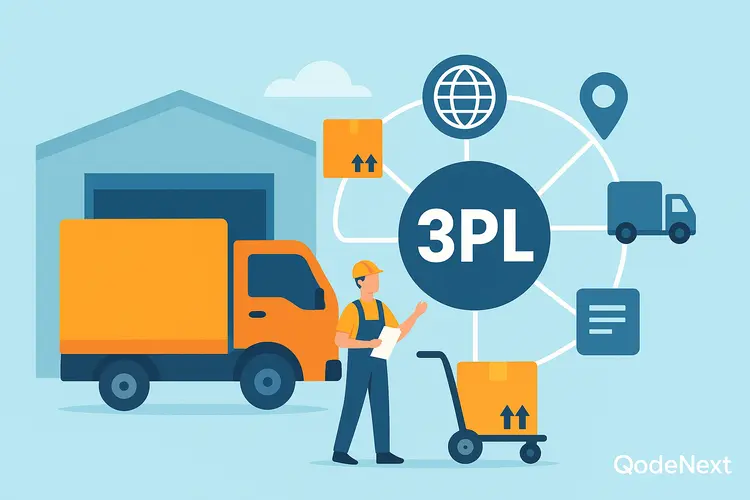In today’s fast-paced business landscape, effective management of valuable assets is crucial for maximizing operational efficiency and driving growth. Enter asset tracking, a revolutionary solution that empowers organizations to monitor, trace, and optimize their physical resources.
Whether it’s equipment, inventory, or vehicles, asset tracking provides real-time visibility, streamlines workflows, prevents losses, and enables informed decision-making.
In this comprehensive blog, we will delve into the world of asset tracking, exploring its benefits and shedding light on how it works. From advanced technologies to best practices, prepare to uncover the key to elevating your organization’s asset management capabilities to new heights.
What is Asset Tracking ?
Asset tracking refers to the process of monitoring and managing physical assets within an organization or across a supply chain. It involves using various technologies, such as barcodes, RFID (Radio Frequency Identification), or GPS (Global Positioning System), BLE (Bluetooth Low Energy), to track and trace the movement and location of assets throughout their lifecycle.
The primary objective of asset tracking is to enhance operational efficiency, improve inventory management, prevent loss or theft, and optimize resource allocation. Key features of asset tracking systems typically include:
- Real-time tracking: Asset tracking systems provide real-time visibility into the location and status of assets, allowing organizations to monitor their movement and make informed decisions based on accurate and up-to-date information.
- Inventory management: These systems enable organizations to maintain accurate records of their assets, including information such as quantity, condition, and maintenance history. This helps streamline inventory management processes and ensure optimal resource allocation.
- Asset identification: Asset tracking systems utilize unique identifiers, such as barcodes or RFID tags, to quickly and accurately identify assets. This eliminates manual errors and simplifies asset management tasks.
- Maintenance scheduling: By tracking assets and their maintenance history, organizations can schedule preventive maintenance or repairs based on usage patterns or predefined criteria. This proactive approach helps minimize downtime and prolong asset lifespan.
- Theft prevention and recovery: Asset tracking systems provide an added layer of security by deterring theft and aiding in asset recovery. In case of theft, organizations can quickly identify the location of the stolen asset and take necessary action.
- Analytics and reporting: Asset tracking systems often offer analytics and reporting capabilities, allowing organizations to gain insights into asset utilization, performance, and overall operational efficiency. This data-driven approach helps optimize asset management strategies and identify areas for improvement.
Overall, asset tracking systems offer organizations an efficient and reliable way to monitor, manage, and safeguard their valuable physical assets, contributing to improved productivity and cost savings.
Industry-Specific Applications
Asset tracking isn’t limited to warehouses. For example:
- Automotive: Learn how to effectively track and trace automobile parts to ensure quality and prevent counterfeiting.
- Logistics: GPS and BLE systems help track fleets, containers, and even conveyor belts for end-to-end supply chain visibility.
- Manufacturing: Manufacturers utilize asset tracking to monitor machinery, tools, and inventory. This helps optimize production efficiency, prevent costly downtime through predictive maintenance, and streamline inventory management. Technologies like RFID and IoT sensors provide real-time data on equipment status and location
- Healthcare: Hospitals and healthcare facilities track critical medical equipment such as infusion pumps, wheelchairs, and diagnostic devices to reduce loss and theft, ensure availability, and maintain compliance.
- Retail: Retailers employ asset tracking to manage inventory levels, prevent stockouts, and reduce shrinkage from theft.
- Data Centers: In data centers, asset tracking provides visibility into the location and status of servers, networking equipment, and other critical assets.
Asset Tracking And Inventory Management Solutions Market

The asset tracking and inventory management solutions market refers to the industry that provides software, hardware, and services to track and manage assets and inventory within organizations. These solutions help businesses effectively monitor and control their assets, streamline inventory processes, improve operational efficiency, and reduce costs. The market for asset tracking and inventory management solutions has been growing rapidly in recent years, driven by several factors:
1. Increasing need for operational efficiency:
Businesses across various industries, such as manufacturing, retail, healthcare, logistics, and transportation, recognize the importance of efficient asset and inventory management. They are adopting automated solutions to optimize their processes, reduce manual errors, and improve productivity.
2. Technological advancements:
Advancements in technologies such as Internet of Things (IoT), cloud computing, RFID (Radio Frequency Identification), barcode scanning, and real-time tracking have revolutionized asset tracking and inventory management. These technologies enable organizations to capture, analyze, and utilize data in real time, leading to better decision-making and enhanced operational performance.
3. Compliance and regulatory requirements:
Many industries, such as healthcare and pharmaceuticals, have strict regulations regarding asset tracking and inventory management. Compliance with these regulations requires accurate tracking, tracing, and monitoring of assets and inventory, leading to increased adoption of specialized solutions.
4. Demand for supply chain visibility:
In today’s globalized marketplace, supply chains have become more complex, involving multiple stakeholders and geographies. Asset tracking and inventory management solutions provide end-to-end visibility and transparency across the supply chain, helping organizations mitigate risks, reduce stockouts, and improve customer satisfaction.
5. Cost reduction and asset optimization:
Efficient asset tracking and inventory management can help organizations reduce costs associated with asset loss, theft, or misplacement. By having real-time visibility into their inventory levels, businesses can optimize stock levels, minimize excess inventory, and avoid stockouts, leading to cost savings and improved profitability.
6. Integration with other business systems:
Asset tracking and inventory management solutions are often integrated with other business systems such as Enterprise Resource Planning (ERP), Customer Relationship Management (CRM), and Warehouse Management Systems (WMS). This integration allows for seamless data exchange and improved coordination between different departments, leading to better overall business performance.
7. Adoption of cloud-based solutions:
Cloud-based asset tracking and inventory management solutions are gaining popularity due to their flexibility, scalability, and cost-effectiveness. Cloud-based platforms enable businesses to access real-time data from anywhere, enhance collaboration, and eliminate the need for extensive IT infrastructure.
8. Mobile-based tracking and management:
With the widespread use of smartphones and tablets, mobile applications have become an integral part of asset tracking and inventory management solutions. Mobile-based tracking enables field personnel to update asset information, conduct inventory counts, and perform transactions on the go, improving efficiency and accuracy.
9. Predictive analytics and machine learning:
Advanced analytics techniques, such as predictive analytics and machine learning, are being incorporated into asset tracking and inventory management solutions. These technologies analyze historical data patterns, identify trends, and provide insights to optimize inventory levels, predict maintenance needs, and forecast demand, enhancing operational decision-making.
Overall, the asset tracking and inventory management solutions market is expected to continue its growth trajectory as businesses increasingly recognize the value of efficient asset and inventory management in driving operational excellence and competitive advantage.
Frequently Asked Questions
1. How does asset tracking differ from inventory management?
Asset tracking focuses on monitoring the location, status, and usage of valuable physical assets such as equipment, tools, or vehicles throughout their lifecycle. Inventory management, on the other hand, deals primarily with the quantities and movement of goods or materials meant for sale or production. While both systems can overlap, asset tracking emphasizes asset utilization and maintenance, whereas inventory management centers on stock levels and order fulfillment.
2. What technologies are most commonly used in asset tracking?
The most common technologies include barcodes, RFID (Radio Frequency Identification), GPS, and IoT (Internet of Things) sensors. Barcodes and RFID tags allow for quick scanning and identification, while GPS and IoT devices enable real-time location tracking and condition monitoring. The choice of technology depends on the type of assets, required accuracy, and operational environment.
3. How does asset tracking help prevent loss and theft?
Asset tracking systems provide real-time visibility and alerts when assets move outside designated zones or are accessed without authorization. This immediate awareness allows organizations to respond quickly to potential theft or misplacement. Detailed movement histories also make it easier to investigate incidents and recover lost assets.
4. Can asset tracking systems be integrated with other business software?
Yes, modern asset tracking solutions often integrate seamlessly with ERP, CRM, and warehouse management systems. This integration allows for unified data management, improved process automation, and better coordination across departments. As a result, businesses gain a holistic view of their operations and can make more informed decisions.
5. What are the benefits of using cloud-based asset tracking solutions?
Cloud-based asset tracking offers real-time access to data from any location, easy scalability, and reduced IT infrastructure costs. Updates and maintenance are managed by the service provider, ensuring the system is always up-to-date and secure. Additionally, cloud solutions facilitate collaboration among teams and support mobile access for field personnel.
6. How can predictive analytics enhance asset tracking?
Predictive analytics uses historical and real-time data to forecast asset maintenance needs, usage trends, and potential failures. By anticipating issues before they occur, organizations can schedule preventive maintenance, reduce downtime, and extend asset lifespans. This proactive approach leads to greater operational efficiency and cost savings.
7. What industries benefit most from asset tracking?
Industries such as manufacturing, logistics, healthcare, construction, and retail see significant benefits from asset tracking. These sectors often manage large numbers of valuable or mobile assets, making real-time visibility and control crucial for operational efficiency and regulatory compliance. Asset tracking also supports safety, reduces losses, and improves resource allocation in these environments.
Conclusion
In conclusion, asset tracking is a powerful tool that offers numerous benefits to businesses. By implementing asset tracking technologies like RFID, GPS, and barcode scanning, organizations can gain real-time visibility into their assets, streamline inventory management, reduce losses, and improve overall efficiency. Qodenext’s tracking and inventory management solution stands out with its advanced features and user-friendly interface.
It empowers businesses to effortlessly track assets, manage inventory, and make data-driven decisions. By utilizing Qodenext’s solution, businesses can enhance their supply chain management, minimize downtime, and maximize asset utilization. Experience the power of streamlined operations by leveraging Qodenext’s tracking and inventory management solution.






